Feature ArticleDECARBONIZATION WAVES FROM ASIA TO THE WORLD
Translating climate targets into action, the need for greater regional cooperation to deliver a just, inclusive energy transition, Japan’s leadership potential in Asian decarbonization—energy expert Dr. Nuki Agya Utama, head of the Asia Zero Emission Center (AZE Center), sets out a roadmap for tackling one of humanity’s biggest challenges.
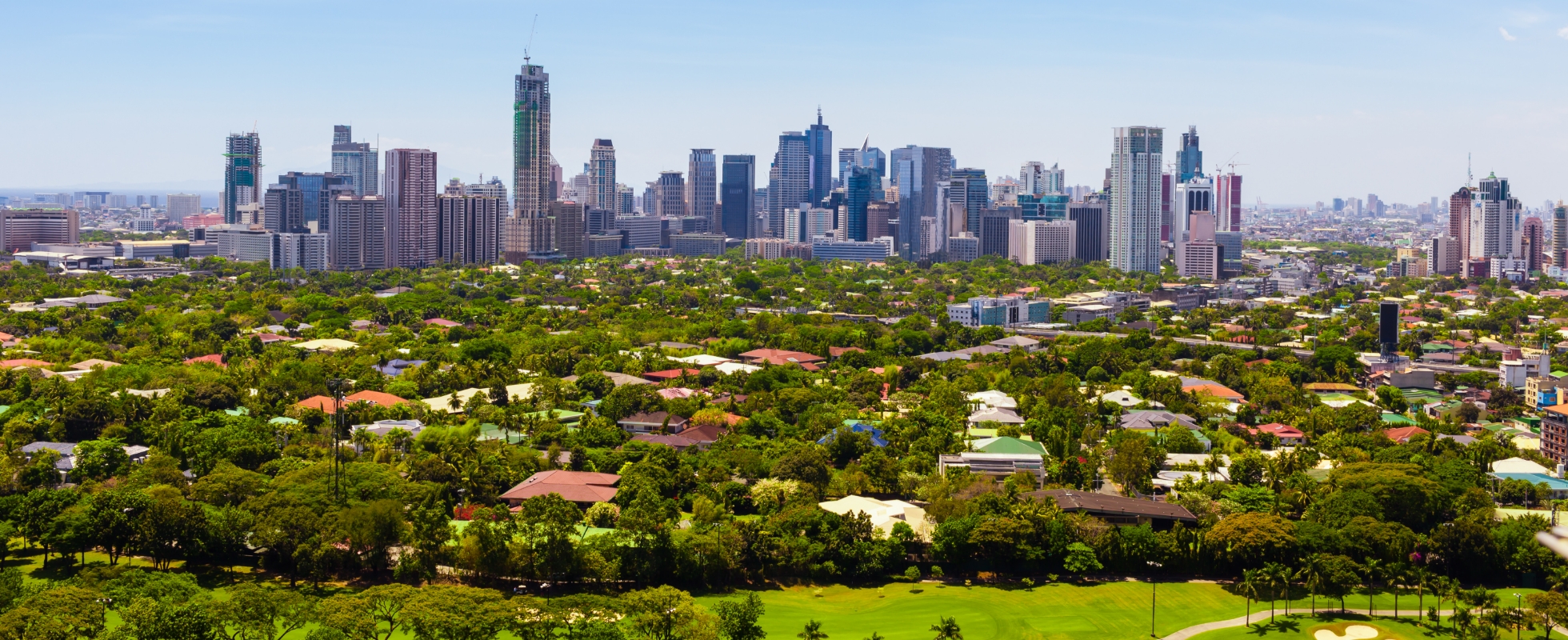
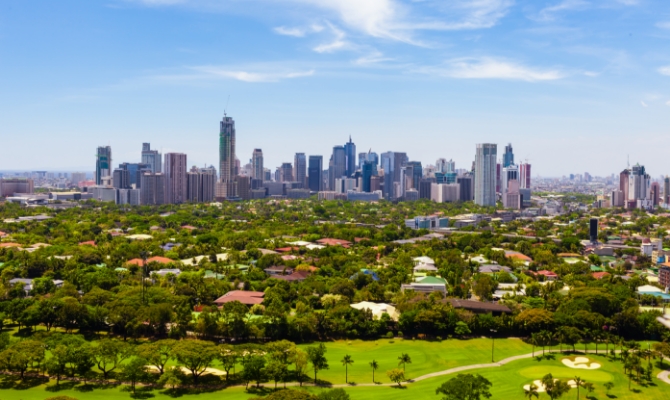
Development of Metro Manila’s Makati City financial and commercial hub prioritizes integration of green spaces, sustainability, and connectivity.


AZEC is a platform for cooperation towards carbon neutrality/net-zero emissions in the Asian region, involving 11 partner nations. It was established in 2023 to drive regional decarbonization while ensuring energy security and economic growth.

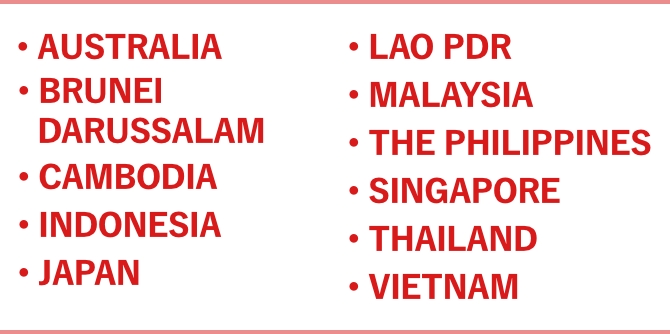
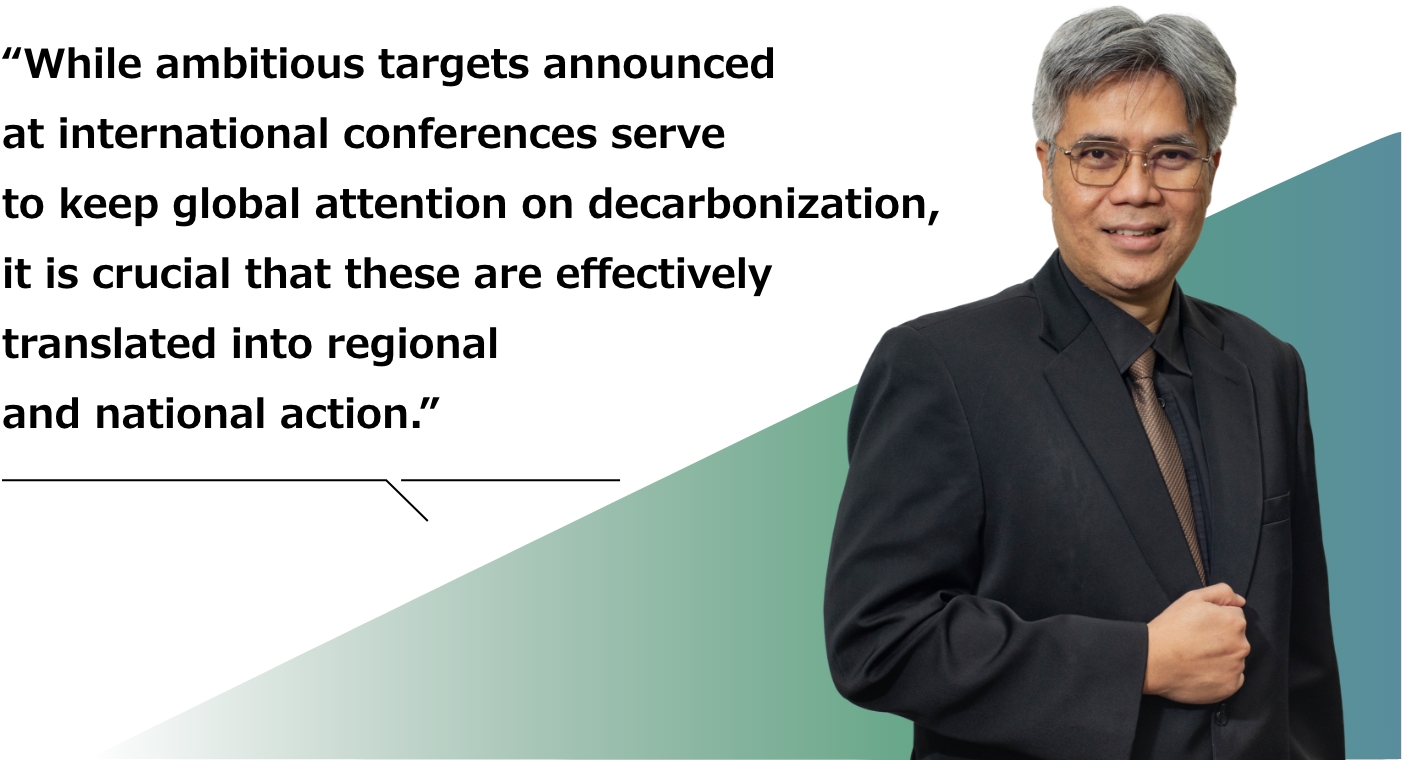
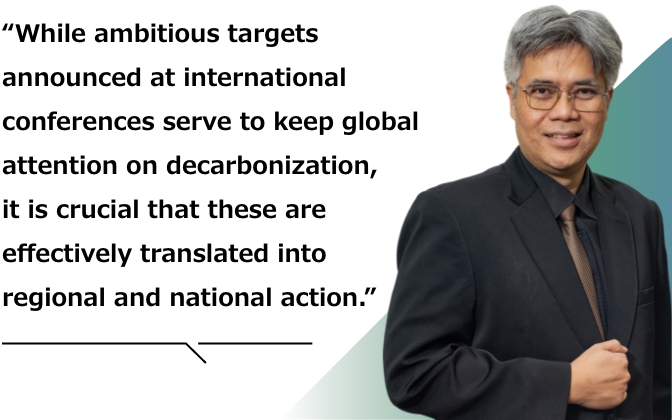
Energy expert and head of the Asia Zero Emission Center Dr. Nuki Agya Utama With expertise encompassing renewable energy, energy efficiency, and green design, his career has spanned the private, public, and NGO sectors. He is currently director for Energy Policy and head of the AZE Center at ERIA (Economic Research Institute for ASEAN and East Asia). His academic career has taken him from Indonesia to Holland, through post-graduate studies in London and Thailand, and on to post-doctoral work in Kyoto.


The center is structured around four decarbonization pillars. The Decarbonization Roadmap establishes targets and timelines, and identifies key drivers for achieving carbon neutrality, tailored to each country’s circumstances.
Sector Specific Actions provide detailed insights and technologies essential for decarbonization in the core sectors of power, mobility, and industry, while overseeing cross-sector initiatives such as hydrogen, ammonia, biofuels, transition fuels, carbon dioxide capture, utilization and storage (CCUS), and critical minerals.
Market Enablers coordinate market structures to evaluate and attract investments in decarbonization technologies while supporting economic growth.
Finally, Stakeholder Engagement fosters regional cooperation and policy dialogue among AZEC countries by sharing insights and promoting collaboration.


Other issues include ensuring clean energy affordability and existing fossil fuel subsidies. Meanwhile, many AZEC partner countries depend on fossil fuel imports, impacting energy security. The intermittency of renewables requires investment in energy storage and backup power sources, and necessitates regional energy cooperation, which faces regulatory and infrastructure-related barriers. Fragmented regulations and standards for carbon pricing and emerging technologies slow regional collaboration.
One of the biggest hurdles is finance. For example, the ASEAN Power Grid (APG) alone requires an estimated USD16 billion in capital expenditure. Mobilizing resources and enhancing regional cooperation are essential to achieving AZEC’s decarbonization goals.
Embracing the concept of “one goal, various pathways,” AZEC acknowledges that there are various pathways towards carbon neutrality, taking into account each country’s geographic, economic, technological, institutional, social, and equity factors.
While financing is one of the key issues, there are many more, including technological barriers such as access to advanced green/transition technologies and technology transfer.
In terms of specific examples, grid infrastructure is an issue. For a country like Singapore, which has high electricity demand, there are challenges in transmission from Malaysia and Thailand. Vietnam, which has 16 to 19 GW of renewable power capacity, still faces blackouts in parts of the country during peak hours due to infrastructure and connectivity problems.
Another issue is how to stabilize electricity supply through storage, for which we don’t yet have any solid answers in terms of batteries or other solutions.
Biofuels are plentiful in the region, notably in Malaysia, Thailand, and the Philippines, and this could contribute to reducing reliance on fossil fuel imports. However, the current share of biofuels in the transport sector is very small. At present, Indonesia is implementing measures to substantially increase the use of biodiesel and bioethanol.
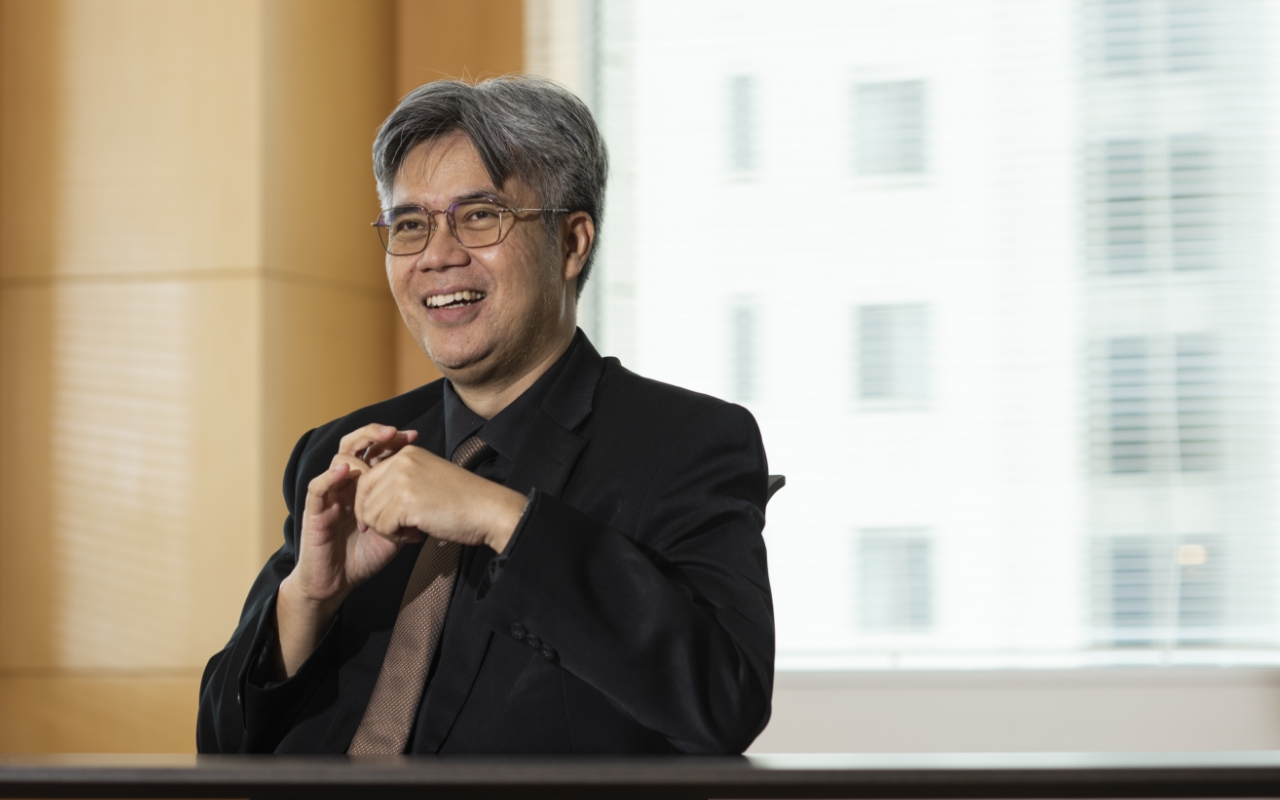


In Asia, rapid growth in renewables is often constrained by infrastructure bottlenecks, regulatory misalignment, and the continued reliance on coal and natural gas, particularly in countries such as China, India, and Indonesia.
A key regional trend is the increasing focus on energy transition pathways that balance sustainability with affordability and security.
Japan and South Korea are leading advancements in hydrogen and ammonia co-firing, while ASEAN countries are working on integrating renewables into their power grids and developing carbon markets. The ASEAN Plan of Action for Energy Cooperation (APAEC) plays a critical role in fostering regional collaboration.
Regional cooperation through APAEC, AZEC, and carbon market harmonization will be essential for ensuring that Asia’s transition as a whole is cohesive, pragmatic, and aligned with economic realities.


Within this context, JBIC plays a crucial role in financing Asia’s energy transition by providing low-interest loans, risk guarantees, and transition finance for clean energy projects. Its commitment to transition finance ensures that Asian countries can secure the resources needed for decarbonization while maintaining energy security and industrial competitiveness.
I remain optimistic that the world is making gradual yet meaningful progress in decarbonization. Renewable energy is expanding rapidly, energy storage technology is improving, and countries are exploring diverse pathways such as hydrogen, ammonia, CCUS, and biofuels to support their transition.
However, while ambitious targets announced at international conferences serve to keep global attention on decarbonization, it is crucial that these are effectively translated into regional and national action.
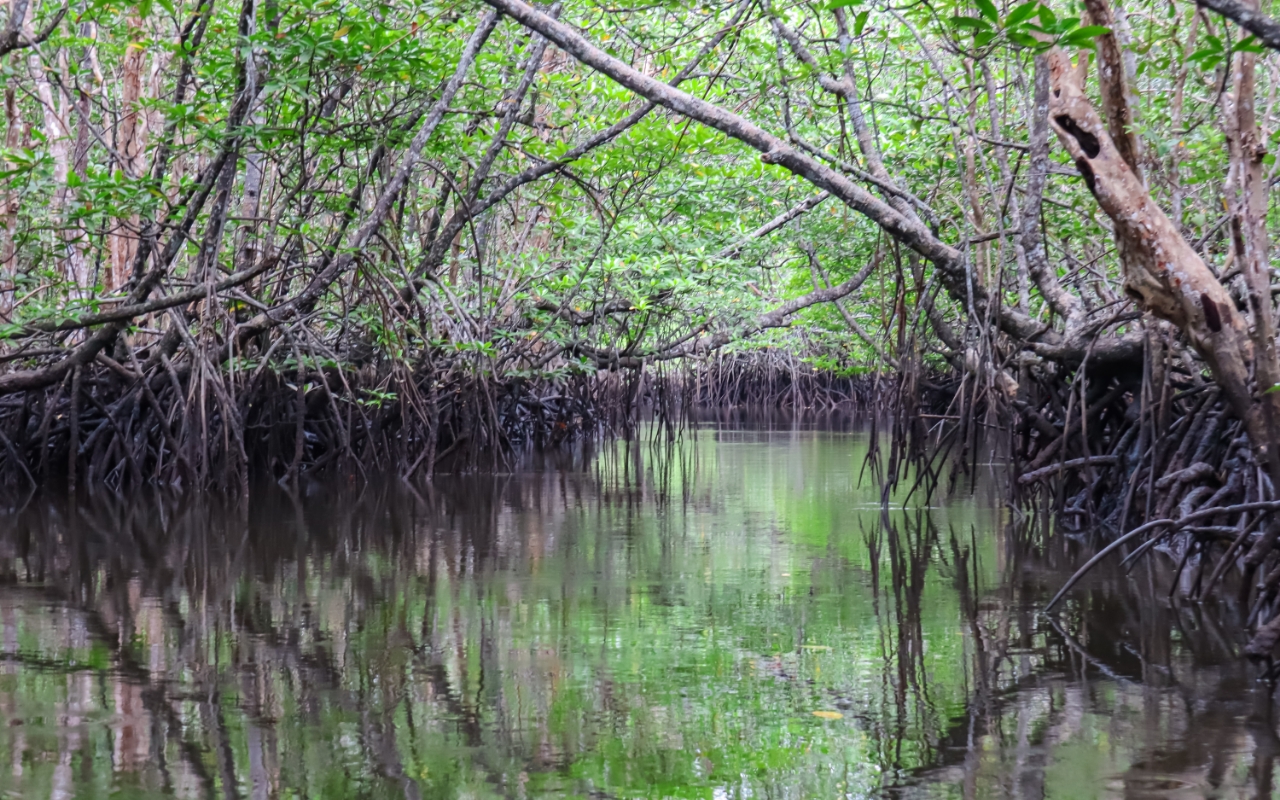
Mangroves support biodiversity, provide biomass, and help fight climate change.







